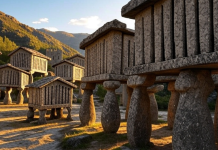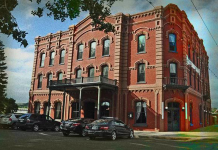Knossos Palace, located on the island of Crete in Greece, is widely regarded as Europe’s oldest palace, with its origins tracing back to the Bronze Age Minoan civilization. Often associated with the legendary King Minos and the myth of the Minotaur, it represents one of the earliest centers of advanced European society.
The site of Knossos has been inhabited since around 7000 BC, during the Neolithic period, making it one of the oldest known settlements in Crete and possibly Europe. The first palace structure was constructed around 1900-2000 BC at the start of the Middle Minoan period, built on earlier foundations and serving as a hub for religious, administrative, and economic activities rather than strictly a royal residence.
It underwent destruction and rebuilding, notably around 1650 BC due to earthquakes, and reached its peak prosperity between 1650 and 1450 BC. By around 1450 BC, following invasions or disasters that destroyed other Minoan palaces, Knossos came under Mycenaean influence and was the last major Minoan center standing. The palace was ultimately abandoned or destroyed by fire around 1350-1375 BC, though the site continued to hold cultural importance in later Greek, Roman, and Byzantine periods.
Modern excavations began in the late 19th century, with British archaeologist Sir Arthur Evans leading major digs from 1900 onward, though his extensive reconstructions have sparked debate over authenticity. In 2025, Knossos was designated a UNESCO World Heritage Site for its historical value.
Knossos earns its title as Europe’s oldest palace due to its early construction date (around 1900 BC), predating other known European palatial structures by centuries, and its role as the epicenter of the Minoan civilization — the first advanced Bronze Age society in Europe, influencing trade, art, and architecture across the Mediterranean. While medieval castles like Windsor (built in 1070 AD) are often cited as ancient, they are far younger than this prehistoric Minoan complex.
Architecture and Features
Spanning about 150,000 square feet, the palace was a multi-story complex organized around a large rectangular central court used for rituals and gatherings.
Key elements include:
Storage Magazines:
Vast rooms with massive pithoi (jars) for storing oil, grain, wine, and other goods, highlighting the site’s economic role.
Throne Room:
Dating to the 15th century BC, this is considered the oldest throne room in Europe, featuring an alabaster throne, gypsum benches, and frescoes of griffins—possibly used for ceremonies involving a priest-king or deity.
Frescoes and Art:
Vibrant wall paintings depicting bull-leaping, processions, marine life, and daily scenes, showcasing Minoan artistic sophistication.
Advanced Engineering:
Innovative plumbing with terracotta pipes, aqueducts for fresh water, drainage systems, and even flushing toilets — remarkable for the era.
Labyrinthine Layout:
The complex’s maze-like corridors and rooms inspired the Greek myth of the Labyrinth designed by Daedalus to house the Minotaur.
The architecture used stone, timber, and plaster, with distinctive Minoan columns that tapered downward. Evans’ restorations, including concrete reinforcements, have preserved much of the site but altered some original elements.
As Greece’s most visited archaeological site, Knossos offers insights into Minoan culture, from trade networks spanning Egypt and the Near East to early writing systems like Linear A and B. It symbolizes the dawn of European civilization, blending history, mythology, and archaeology. Visitors can explore the ruins near Heraklion, Crete, though it’s recommended to go with a guide for context on its mythical and historical layers.






